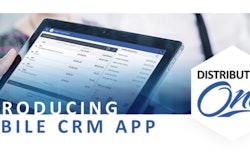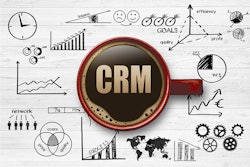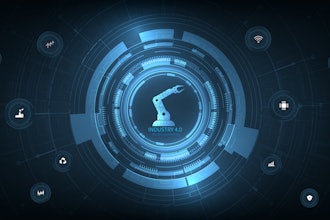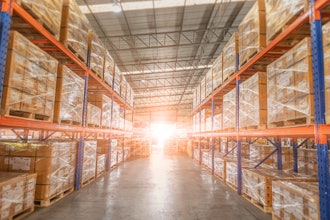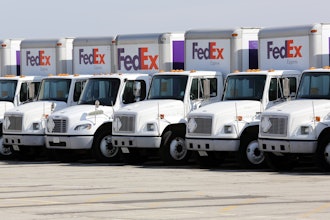It seems like it was just yesterday that the concept of machine learning officially entered the mainstream. But now, it’s already being eyed as the next leap forward for businesses that live and die by the efficiency of their supply chain management practices.
Are you ready to apply machine learning to your small or large business? Do you fully understand the implications and opportunities this branch of technology offers for business, commerce and material handling? Let’s take a look at some practical considerations as you weigh bringing machine learning into your operation.
1. Understand the Opportunities
There’s no putting the genie back in the bottle. Now that machine learning is here, industry will likely never be the same. At its simplest, machine learning empowers computers to learn — by combing through vast amounts of collected data — how to make predictions and recommendations and in some cases take proactive or reactive action on its own. It’s taken a long time for our computing power to reach the levels necessary to achieve this rudimentary level of intelligence.
Machine learning as part of supply chain management offers the means for business leaders to become more deeply involved in the daily realities of “getting business done.” Using machine learning to modernize your facility means decentralizing decision-making while simultaneously making the factors and variables that steer our decisions in the first place more accessible and shareable.
2. Assign a Machine Learning Specialist for Your Organization
One key step you can take is to treat machine learning as it applies to your business model like a new skill set entirely. Because that’s what it is. Beyond the practical expertise, you need a leader in your organization who can communicate clearly and effectively about how machine learning will change what you do. This person will also help drive adoption among your workforce and navigate the transition.
3. Understand What Data You Need to Gather
Machine learning isn’t possible with data. Remember what you’re actually doing here: You’re providing a computer network with the information it needs to spot and react to emerging trends and anticipate future ones. That’s not possible if you’re not already gathering — or have the means to gather — data that can actually make your machines “smarter.”
If you operate a fleet of delivery vehicles, the relevant information might include location data for your trucks plus traffic details and environmental conditions for the areas in which you operate. If much of your activity happens in a chain of warehouses, you might need to collect data on the rate at which product is moved through your facilities.
Of course, effective supply chain management is a team effort, which means communication. The sharing of data between multiple vendors isn’t just a good idea — it’s essential if you want to incorporate machine learning into your business in a way that provides a truly “top-down” view. And that brings us to the next point.
4. Decide What Needs Optimizing
Across your chain of business partners, it can be difficult to arrive at reliable forecasts for future demand. It’s possible to arrive at semi-useful conclusions by “eyeballing” it, but the appeal of machine learning lies in building a network of computers, sensors and other machines to take limited human observational abilities out of the equation. Artificially intelligent machines can simultaneously gather data on:
- Profit requirements
- Customer service inquiries and trends
- Transportation hubs and vehicles in the field
- Supply levels at facilities
- Shipments, incoming orders, returns and defects in real time
Who wouldn’t want organized, actionable data from all these touch points in the supply chain? Even better, machine learning uses best-fit algorithms to draw more meaningful conclusions than we ever could by poring over sales data and spreadsheets.
As you’re spinning up your machine learning efforts, spend some time figuring out where you’ve seen the greatest pain or the highest incidences of slowdowns. If you're totally new to these technologies, you’ll want to ease in by optimizing just one process at a time. Pick your battles early on as you’re building out your IT infrastructure, and always remember you can take additional steps in the future.
5. Invest in the Right Technologies
Maybe you’ve decided your trouble spots involve slowdowns on a particular delivery route. Perhaps there’s something about your product handling process that’s damaging products and creating waste. If you’ve been following along so far, you have some idea of where your machine learning efforts would be best spent.
But don’t be talked into buying technology you don’t need or the wrong equipment for the data points you actually want to measure. Lots of supply chain entities already use RFID tags to observe the comings and goings of freight — and maybe that’s enough insight for you to get started with machine learning.
However, investing in Bluetooth, GPS or other sensor technology, even if they add slightly to the cost of doing business, can easily pay for itself. You’ll have information on the geolocation and even the physical condition of your products — down to the level of individual parcels.
Think of the advantages for something like the apparel industry, which deals in more SKU variations — size, color, fit, gender, etc. — than most others. Automating some of your product handling processes with tracking and machine learning can help reduce incidences of mis-deliveries, miscounted inventory and unbalanced distributions of products across the supply chain.
Machine Learning and the “Right Now” Economy
Most of what we’ve talked about today is in service of creating a global supply chain that’s more adaptable to consumer needs and unforeseen events. The “right now” economy is here to stay, which means even small businesses will need to consider some of these technologies to keep up.
The good news is that if you pick your battles and work with the right talent without overextending yourself, you can put machine learning and big data to work bringing fresh insights into even some of your longest-running and most established business practices.
Megan Ray Nichols is a freelance STEM writer and blogger whose work has appeared on Manufacturing Business Technology, American Machinist, and IoT Evolution. Read more posts by Megan on her blog, Schooled By Science, and follow her on Twitter @nicholsrmegan.





